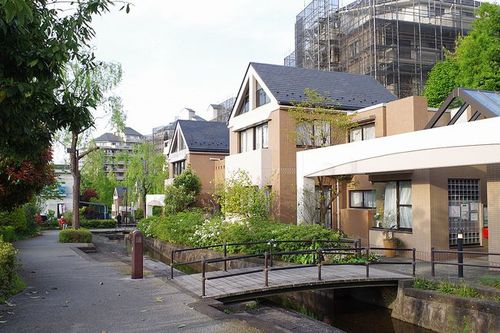January 9, 2018
Science Council of Japan Releases Policy Recommendation: "Roadmap to Healthy Low-Carbon Lifestyles, Cities and Buildings"
Keywords: Climate Change Energy Conservation Transportation / Mobility Well-Being

Image by Konaine Some Rights Reserved.
The Science Council of Japan released on August 24, 2017, the deliberation results of a working group outlining a roadmap for realizing a healthy low-carbon society. The recommendation is explained in detail below, including background and current situation and issues.
Major Japanese cities of the twentieth century built railroads at a time of population flux. This contributed to a significant increase in gross domestic product (GDP) associated with land use and carbon dioxide emissions. However, to achieve a high quality of life (QOL) in the coming super-aged society, Japan needs recommendations on policies for realizing cities and buildings with a low carbon footprint and high environmental performance.
These recommendations are divided into the following four parts:
(1) Increasing motivation for new, healthy, low-carbon lifestyles and behavioral changes
- Promote the study of motivation to encourage behavioral changes and related factors for creating a low-carbon society.
- Support healthy aging in ways that honor traditional Japanese lifestyles.
- Implement educational and awareness-raising activities to promote thinking that embraces various lifestyles.
(2) Designing healthy low-carbon cities and traffic systems for a mature society
- Develop and preserve compact city designs as well as building and neighborhood resources to maintain fiscal health, low carbon emissions, and guaranteed high QOL.
- Set up distribution systems that will allow seniors who have difficulty moving to obtain goods without traveling.
- Control the thermal energy environment in residential spaces and improve citizen awareness (heat-island mitigation, technological innovation in HVAC systems, integrated design of building interiors and exteriors).
- Redesign property/building taxes and fine systems to be commensurate with environmental impact.
(3) Accelerating low-carbon housing and buildings, health measures and energy generation
- Go beyond net zero-energy construction and housing by cutting carbon and generating renewable energy on a life-cycle basis for entire buildings.
- Design and implement an integrated low-carbon housing and building strategy that includes everything, including energy efficiency for existing buildings, renewable energy use, and energy management.
- Build smart communities on a city and block scale, with a priority on both high efficiency and high QOL.
- Evaluate low-carbon measures based on the various benefits they provide as policies for improving the health and comfort of seniors and the physical strength and health of children, and incorporate them into an integrated strategy
(4) Applying Japan's low-carbon cities, buildings, and traffic systems strategically across Asia
- Build a database on energy consumption from civil activity and traffic systems in the Asian region (to control indoor environments in hot and humid areas, avoid traffic jams by balancing rail and road use, and substantially reduce CO2 emissions).
- Develop an innovation strategy for East and Southeast Asia so these populations, when they reach a significant level of aging, can make full use of ICT (information and communications technology) and IoT (Internet of Things) in ways far beyond Japan.
- Actively promote human exchange and technology transfer for sharing scientific knowledge.
It is hoped that this recommendation, inspired by the Paris Agreement, which aims to achieve net zero emissions of greenhouse gases worldwide, will be put to effective use in realizing low-carbon, eco-friendly cities and buildings that are well-prepared for the coming super-aged society.
Related JFS Articles
Related
"JFS Newsletter"
- 'Good Companies in Japan' (Article No.4): 'Eightfold Satisfaction' Management for Everyone's Happiness
- "Nai-Mono-Wa-Nai": Ama Town's Concept of Sufficiency and Message to the World
- 'Good Companies in Japan' (Article No.3): Seeking Ways to Develop Societal Contribution along with Core Businesses
- "Good Companies in Japan" (Article No. 2): Seeking "Happiness" for All Stakeholders
- "Good Companies in Japan" (Article No. 1): Valuing Employee Happiness and Trust
Related
"Popular Articles"
- Study Project Begins Seeking Happy Local Communities
- Itochu to Ban Late Night Overtime and Encourage Morning-focused Working Style
- Japan Ranks Sixth in Child Overall Well-being, but 21st in Material Well-being
- Japan's Cabinet Office Launches Website Providing Data on Women in the Workplace
- Japanese Women Still Struggle to Find Employment after Having Children, Cabinet Survey Shows


